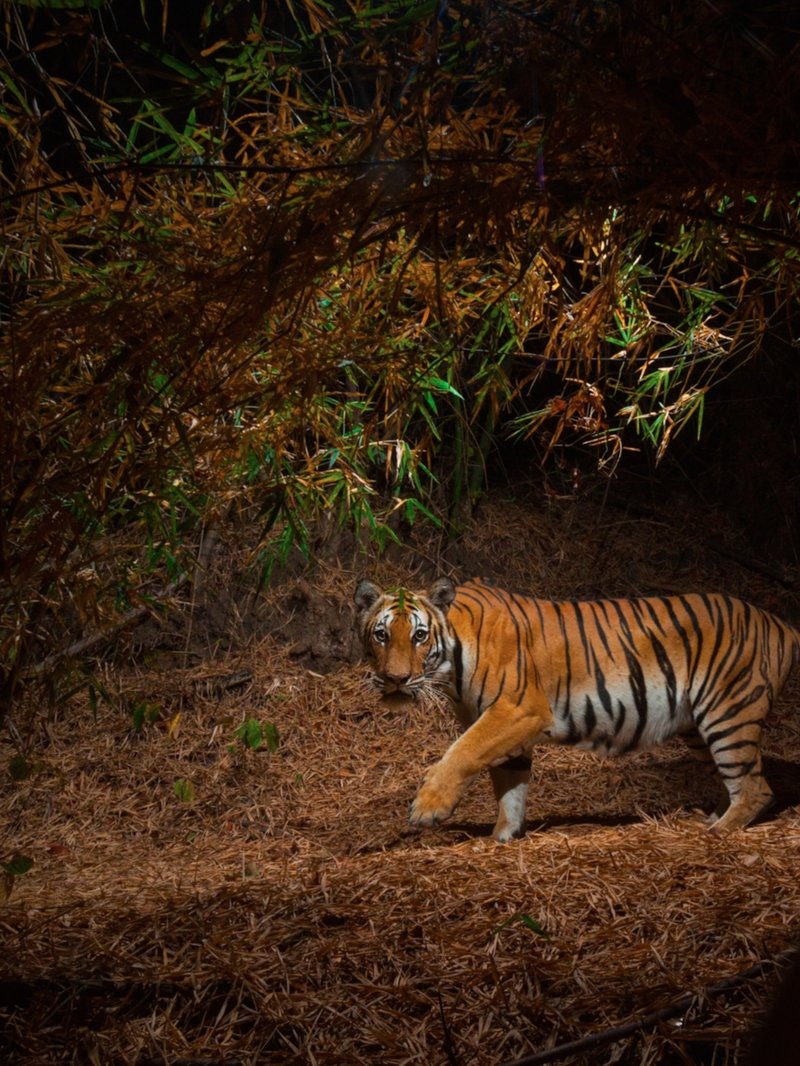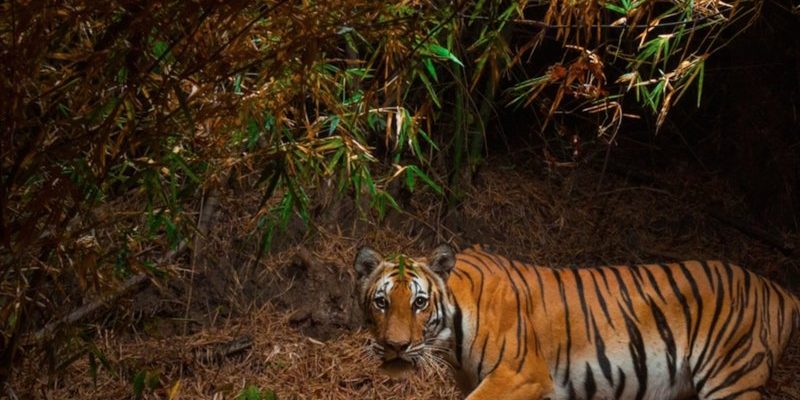
You might be wondering what makes these tigers so special. Well, they’re not just your average big cat! With their unique features and surprising habits, Indochinese tigers have developed fascinating strategies to thrive despite harsh conditions. Let’s dive into how they navigate their difficult environment, making the most of what they have while highlighting the importance of conserving their wild habitats.
1. Unique Physical Adaptations
Indochinese tigers possess several physical adaptations that help them survive in their diverse and often harsh habitats. Unlike some of their cousins, these tigers have a smaller build and darker fur. This not only helps them blend into the shadows of the forest but also keeps them agile and better suited for navigating rough terrains.
One of their standout features is the longer, more muscular legs. This helps them leap over obstacles like fallen trees or rocky outcrops with ease. Imagine trying to climb a steep hill; having a strong set of legs makes all the difference when it comes to reaching the top. Plus, their sharp retractable claws and powerful jaws are essential tools for catching prey—always handy when dinner is a moving target.
Their keen eyesight and exceptional hearing also play a crucial role in their survival. With incredible night vision, they can hunt effectively in low light. When it’s dark, the world transforms into a different game, and these tigers are right at home.
2. Hunting Strategies
Hunting is a vital part of an Indochinese tiger’s life, and they’ve got some impressive strategies up their furry sleeves. These tigers are primarily solitary hunters, relying on stealth and patience to capture their prey. Picture a skilled player in a stealth video game, quietly sneaking up on opponents—this is exactly how these big cats operate.
They usually hunt at dusk or dawn, taking advantage of the low light to stalk deer, wild pigs, and other animals. The key is to stay hidden. Their striped coats help them blend in with the dappled sunlight filtering through the trees. You might think this is an easy task, but it takes real skill to pinpoint the right moment to pounce.
Indochinese tigers also use their environment strategically. They often choose a location with dense cover, waiting for the perfect opportunity. This patience pays off—successful hunts mean they can then go several days without eating, which is crucial in harsh environments where food might not always be plentiful.
3. Adaptation to Climate
The climate of Southeast Asia can be tough, with its mix of humid rainforests and dry seasons. Indochinese tigers have adapted to these changes in several ways. For starters, they’re quite good at regulating their body temperature. When it gets hot, they often seek out the shade of trees or cool riverbanks, much like we do when we need a break from the summer sun.
During the wet season, their flexible nature allows them to adjust their hunting patterns and territory range. They might move to higher ground or explore areas that are normally too flooded. This adaptability ensures they’re not stuck in one place when conditions change, allowing them to find food and shelter more effectively.
These tigers also rely on their keen sense of smell to track down water sources and prey. When the environment shifts, it’s crucial to stay alert and responsive. Just think about how people grab umbrellas when it rains—a similar instinct kicks in for these creatures when the climate changes.
4. Navigating Human Encroachment
Unfortunately, human encroachment poses a significant threat to the survival of Indochinese tigers. As forests are cleared for agriculture and development, these majestic animals find their habitats shrinking. It’s a bit like trying to navigate a maze that keeps getting smaller—it can be really challenging.
To cope with this, Indochinese tigers have developed better skills in avoiding human settlements. They might alter their movement patterns to stay away from busy areas, using their natural camouflage to remain hidden. This change often requires extra energy and effort, but it’s essential for their safety.
Conservation efforts are incredibly important in this regard. By creating protected areas and wildlife corridors, we can help ensure these tigers have safe routes to travel and hunt. Imagine building bridges in a maze so players can move more freely—this is what wildlife corridors do in the tiger’s world.
5. Social Structure and Communication
The social structure of Indochinese tigers is unique, as they are solitary animals. This means they typically spend most of their time alone. But that doesn’t mean they don’t communicate! They use a variety of sounds, scents, and visual signals to interact with each other.
For example, they’ll leave scratch marks on trees or use their urine to mark their territory. It’s like putting up a “do not enter” sign for other tigers. When it comes to mating, the call becomes a bit more urgent. During mating season, females will vocalize to signal their readiness, while males will respond with deep roars, showcasing their strength.
This communication is crucial, especially in dense forests where visibility is limited. It helps them maintain their territory and ensures they find mates. Just think of it as sending out a friendly reminder or text to ensure everyone understands the situation—only in a much more primal way.
6. Preservation of Habitat
The survival of Indochinese tigers is closely tied to the preservation of their habitat. Without dense forests, rivers, and mountains, these big cats would struggle to find food, shelter, and mates. It’s like taking away the essentials from a well-stocked kitchen and expecting a chef to whip up a gourmet meal—pretty tough!
Conservation initiatives play a crucial role in protecting these environments. Efforts like reforestation and establishing national parks help provide safe spaces for tigers to roam. Equally important is raising awareness among local communities about the value of preserving these ecosystems. After all, a healthy environment benefits everyone, including humans who also rely on these resources.
Engagement in eco-tourism can also be beneficial. When people visit these areas to see tigers in their natural habitat, it creates a financial incentive to protect them rather than harm them. So, the next time you hear about eco-tourism, think about how it can help maintain the wild for these incredible cats!
7. The Role of Technology in Conservation
In recent years, technology has become an essential tool in conservation efforts for Indochinese tigers. Innovative methods like GPS tracking collars allow researchers to monitor their movements and behaviors. This is a huge advantage, as understanding their habits can be key to effective protection.
Camera traps are another fascinating tech advancement. They capture images of tigers in their natural habitat without disturbing them. This helps conservationists gather data on population sizes and behavior patterns, which can inform strategies for their protection. It’s like having an invisible observer that helps gather important insights.
Furthermore, apps and online platforms enable local communities to report sightings or concerns about these tigers. The more information shared, the better equipped conservationists are to respond and protect these magnificent creatures. Honestly, it’s pretty amazing to see how technology is helping bridge the gap between wildlife and human efforts for preservation.
8. Conclusion: The Fight for Survival
Indochinese tigers are remarkable animals that have adapted to survive in some of the toughest environments on the planet. From their unique physical adaptations to their clever hunting strategies, these big cats exemplify resilience. However, as they face increasing threats from habitat loss and human encroachment, our responsibility to protect them has never been more critical.
By supporting conservation efforts, spreading awareness, and understanding their challenges, we can play a part in ensuring that Indochinese tigers continue to thrive in their natural habitat. After all, these magnificent creatures are not just part of our wildlife; they’re also a vital part of the ecosystems that sustain life on Earth. Let’s work together to protect them for generations to come!

